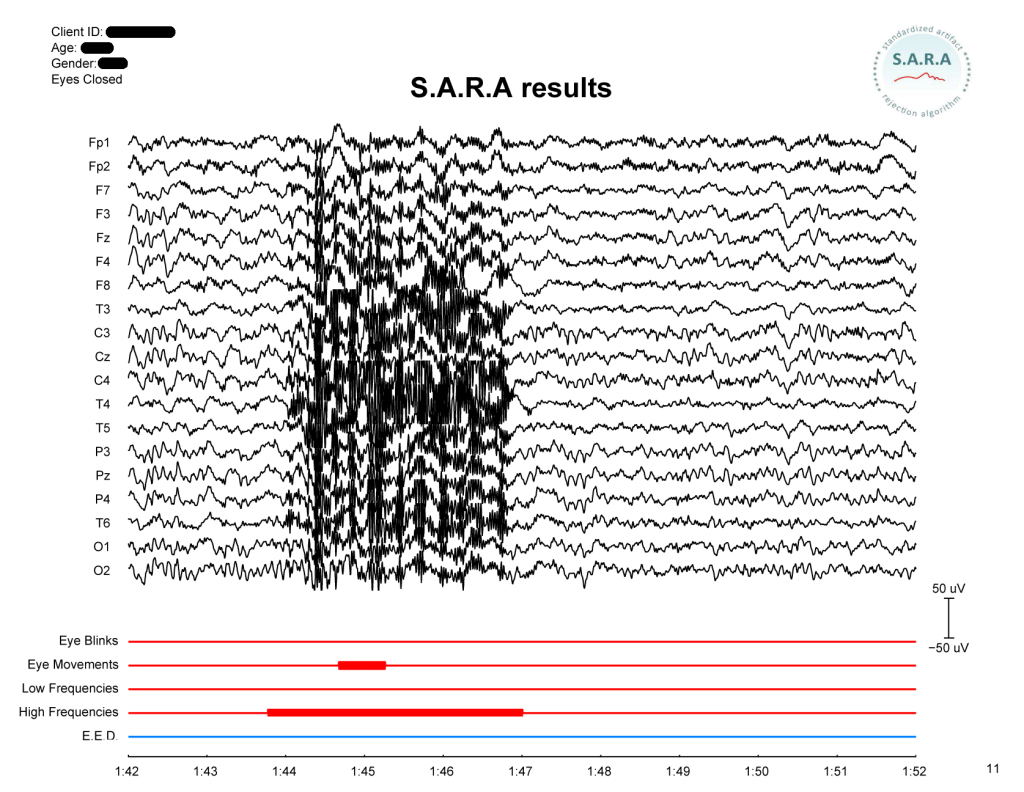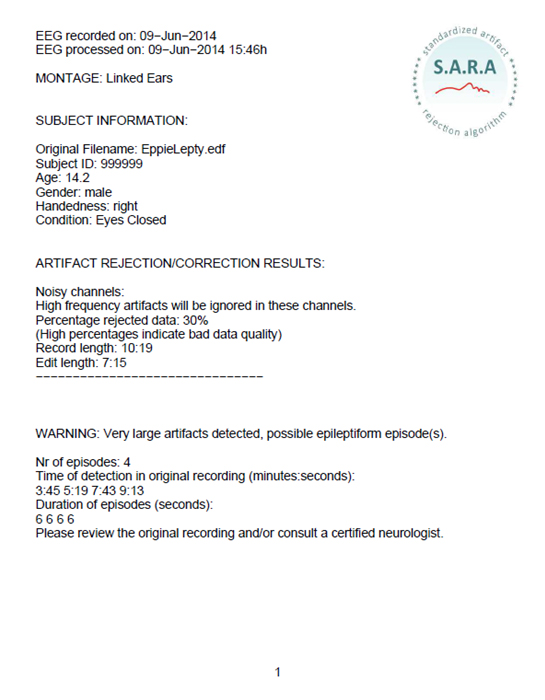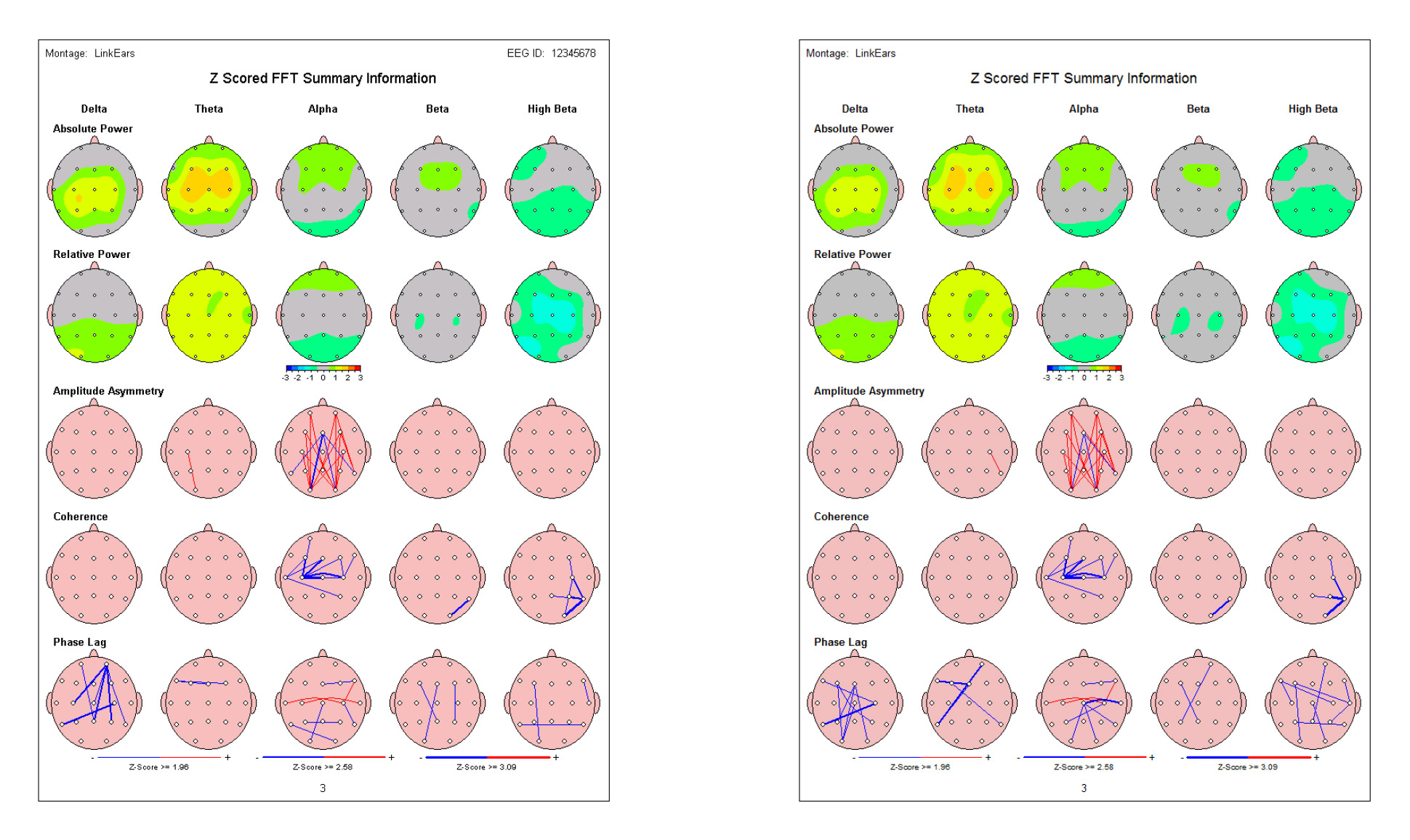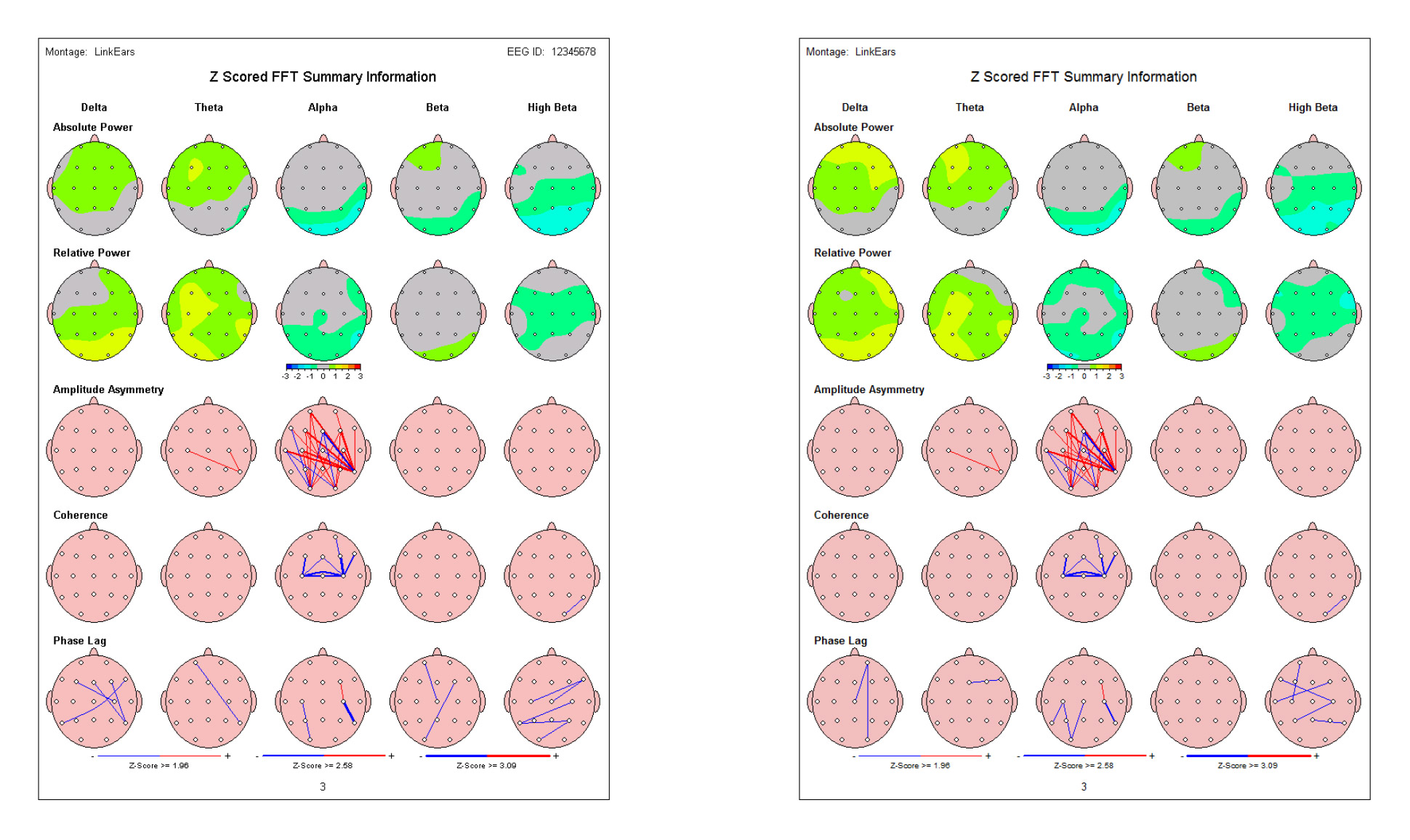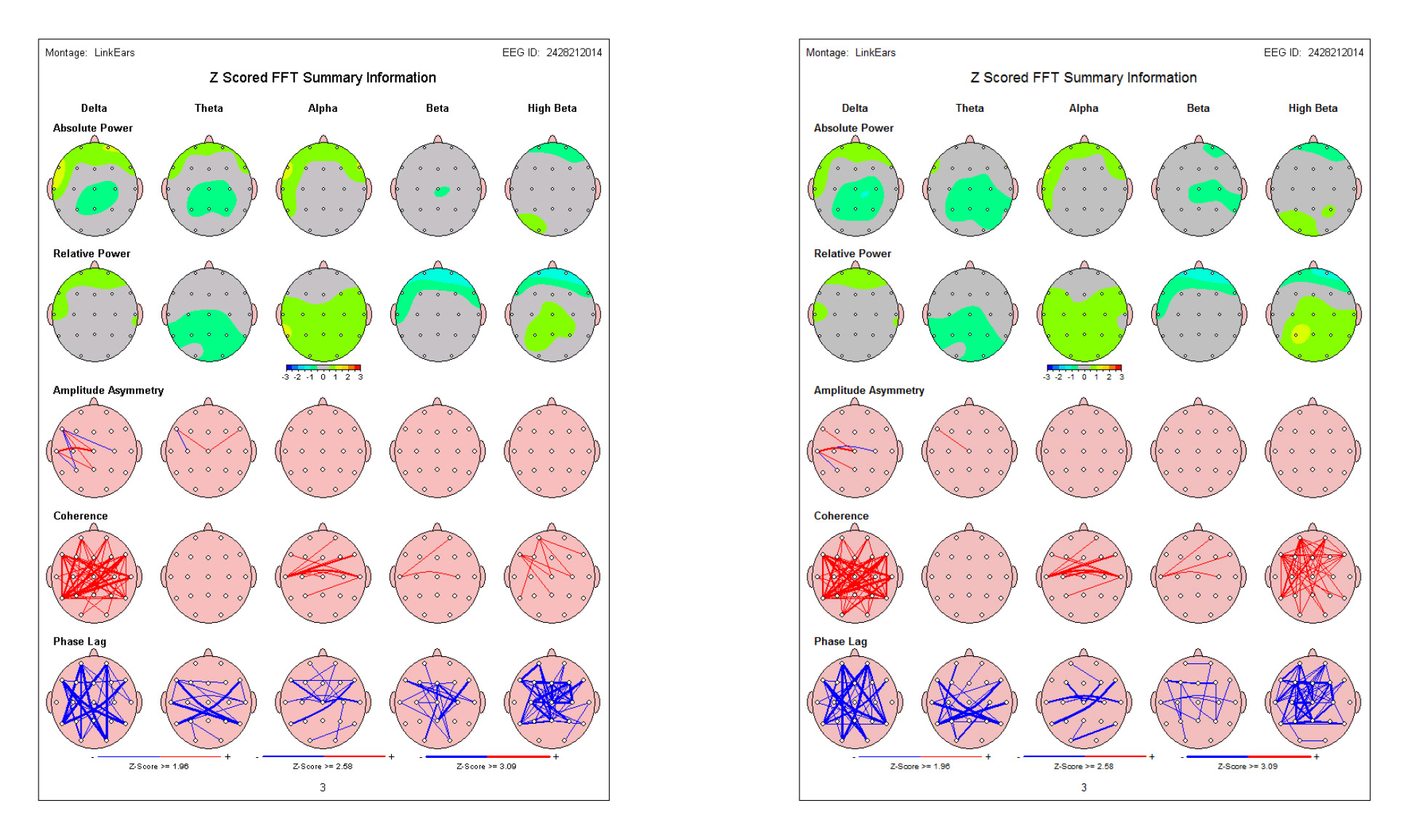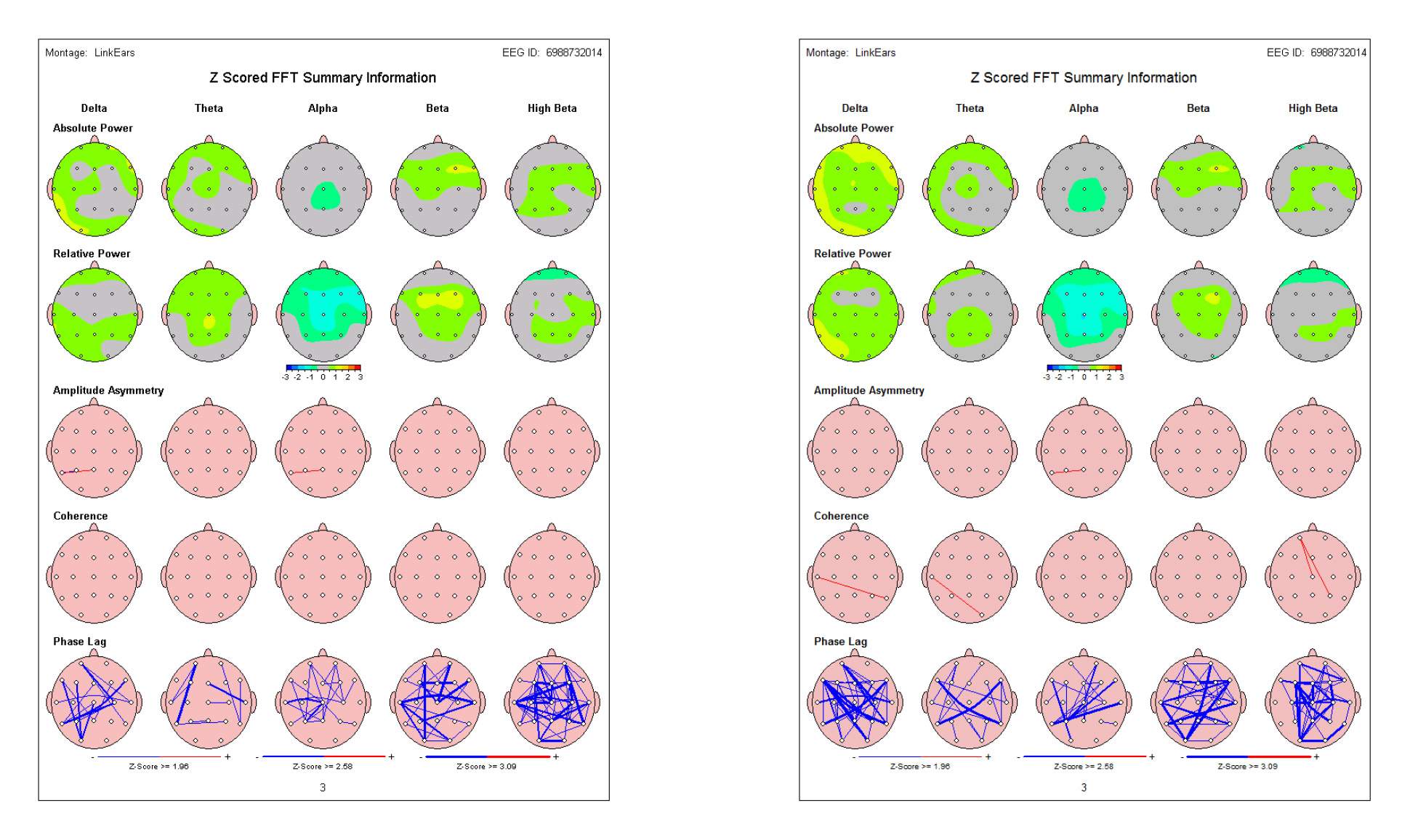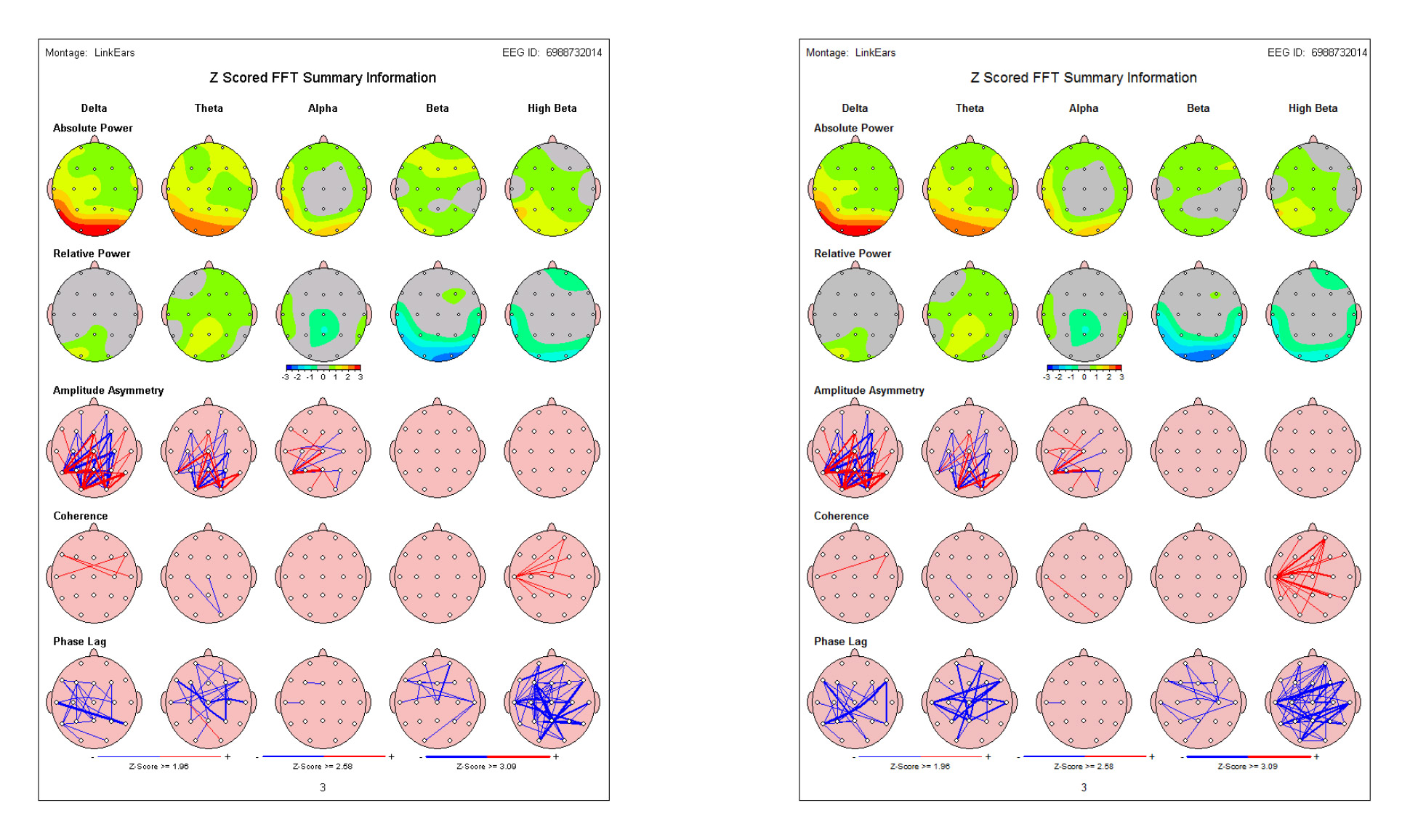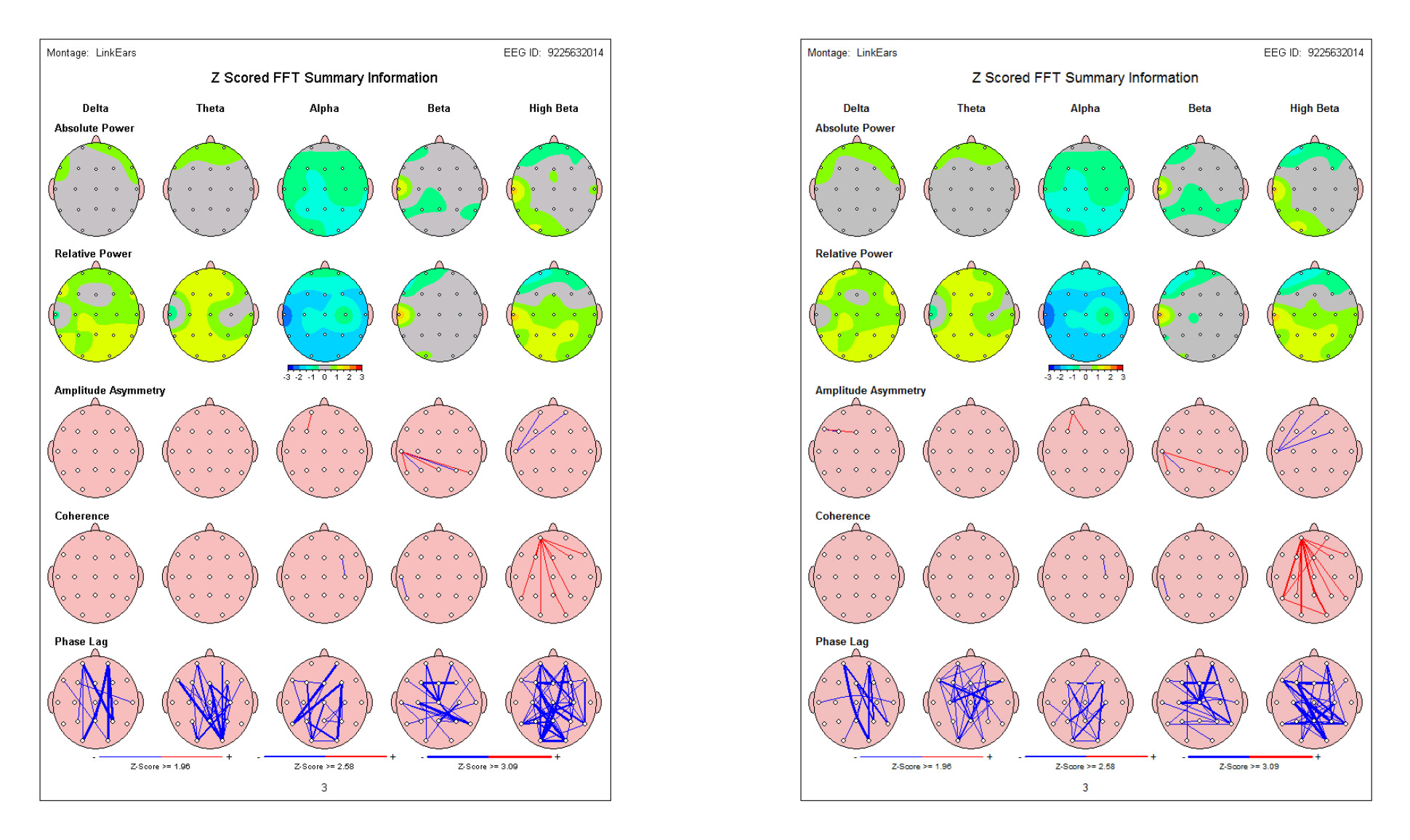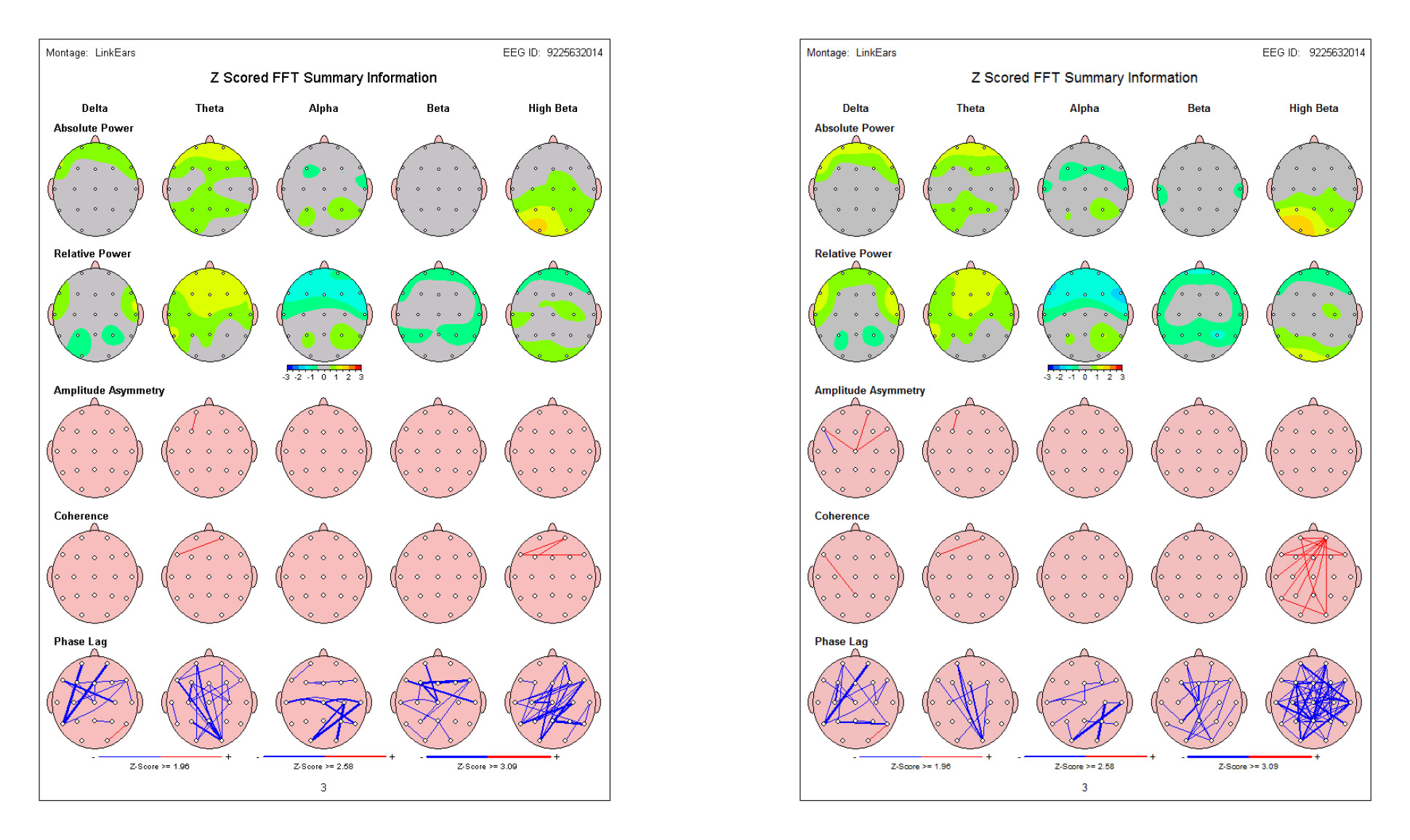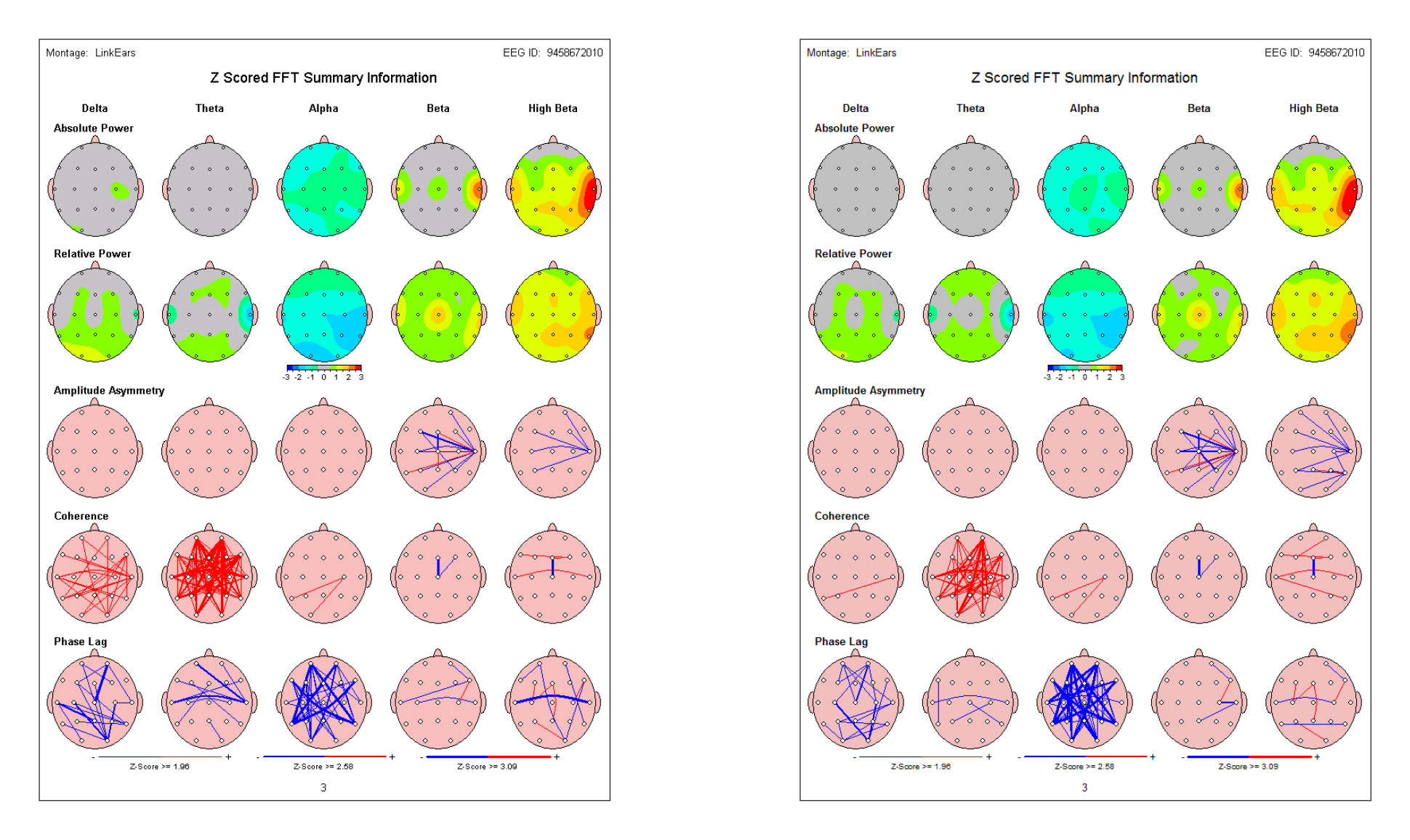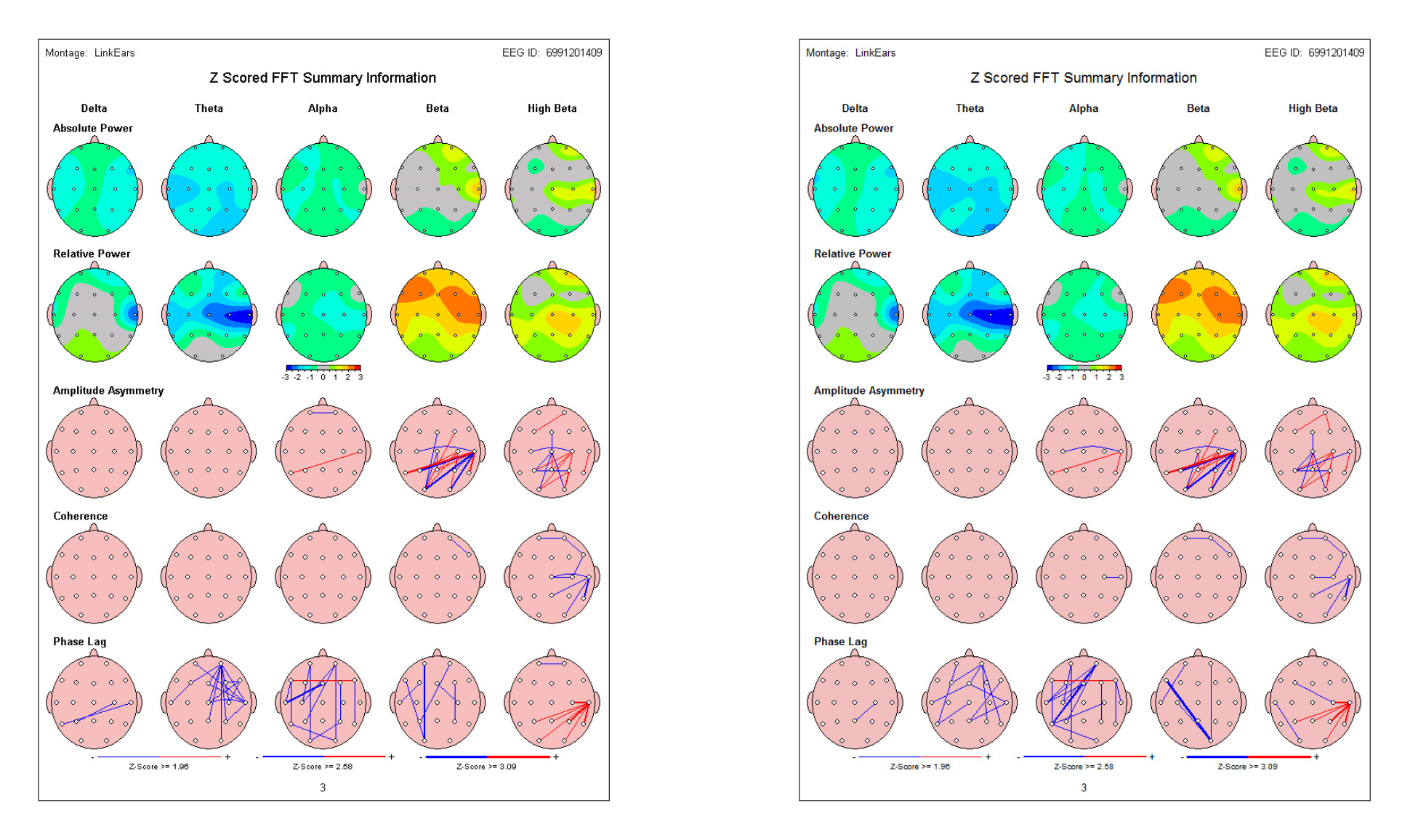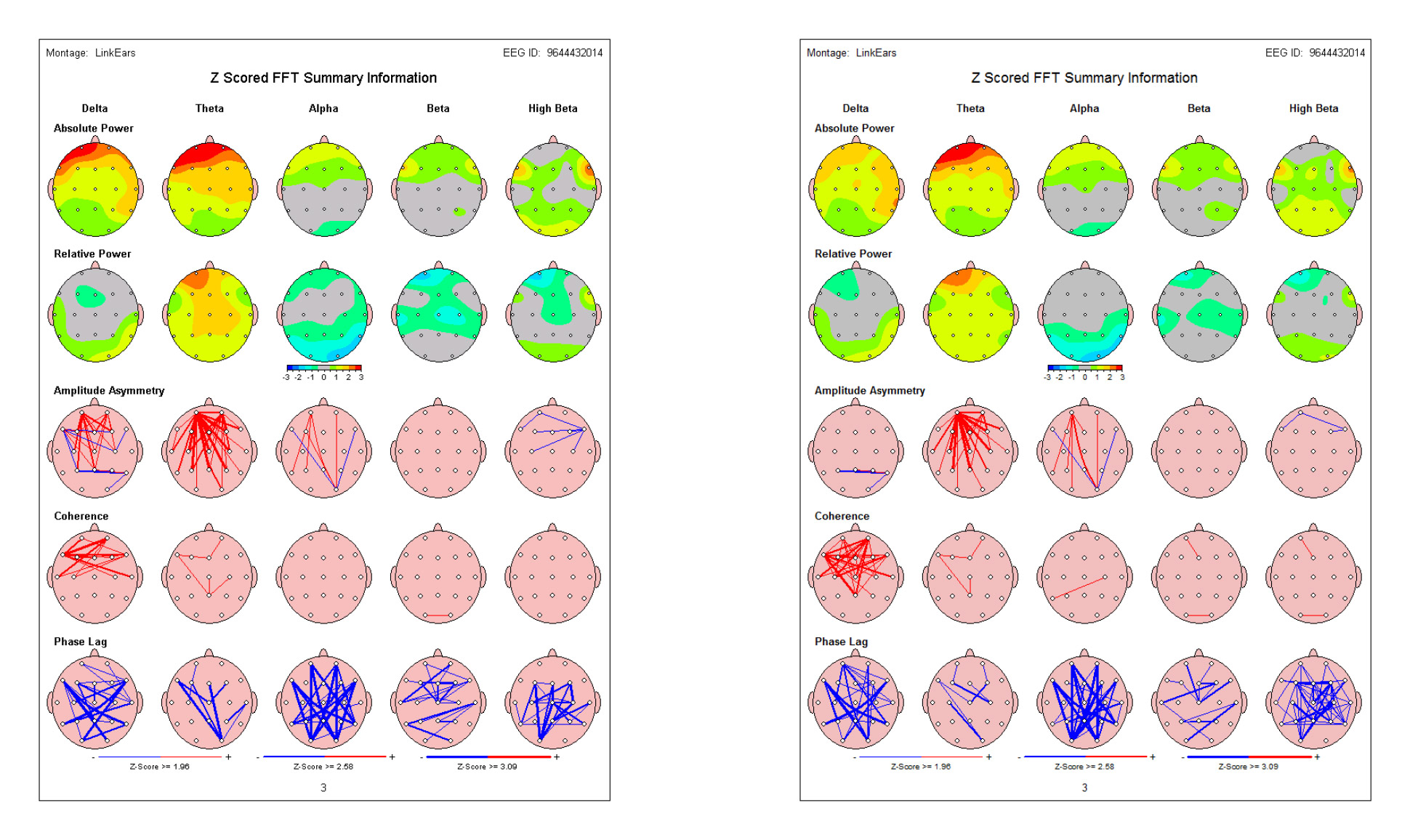De-artifacting with S.A.R.A (Standardized Artifact Rejection Algorithm)
When a raw EEG is uploaded to the qEEG-Pro report service portal, it will automatically be de-artifacted using the standardized artifact rejection algorithm (S.A.R.A). Contrary to what some believe, S.A.R.A has nothing to do with ICA / PCA or other reconstruction techniques. S.A.R.A has been developed by dr. Andre Keizer and has gone through a thorough testing process in which the algorithms and parameters were systematically evaluated and refined (download the qEEG-Pro manual for a detailed description of the methods used). S.A.R.A evaluates four different EEG artifact categories:
- Eye blinks
- Horizontal eye movements
- Low frequency artifacts (e.g. head movement)
- High frequency artifacts (e.g. muscle tension)
When the de-artifacting procedure is complete, you receive a pdf report that shows the raw EEG in which the detected artifacts are marked in the time series. Moreover, the de-artifacted EEG is provided in .edf format so you can view and process your de-artifacted EEG in the software of your choice.
As part of the de-artifacting procedure an epileptiform episode detection (E.E.D.) algorithm was developed that detects very high-powered, low frequency artifacts that can be elicited by epileptiform activity. When such an episode is detected, a warning will be present in the summary of the S.A.R.A results.
An important feature of the qEEG-Pro database is that S.A.R.A was used for all the EEG recordings that are included in the database. This ensures that there will be no differences in de-artifacting methods, processes or criteria (manual or automatic) between the normative database and your uploaded EEG. The EEG data from many other normative databases have been manually de-artifacted and it is therefore not possible to have an exact match between the de-artifacting criteria that you apply to the EEG of your client and the criteria that have been used for the EEGs of the normative database. Having different de-artifacting procedures between a client and a normative database can lead to results that may be (partly) explained by this difference. For example, this may lead to false positives that are related to artifacts in the EEG recording of the client. Perhaps a more severe problem is the presence of false negatives, where artifacts in the normative database prevent deviant neural activity of the client to be detected.

